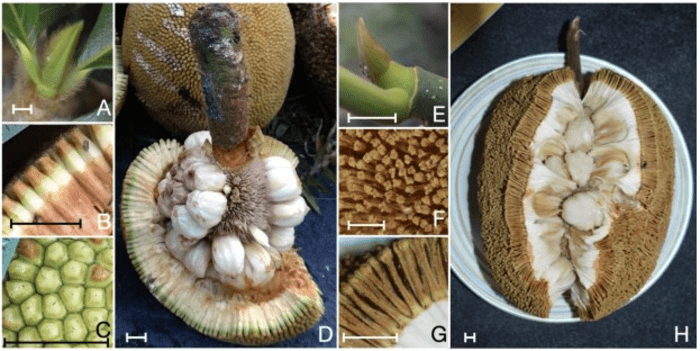Artocarpus odoratissimus, a flowering plant closely related to jackfruit was first described by a Spanish botanist some two centuries ago. Widely cultivated in home gardens in Borneo and the Philippines, it is common in the rainforests of Borneo. But the indigenous Iban people knew it as two trees, distinguished by their fruit shape and size. A new genetic analysis confirms that the Iban are right — it is two trees.

Determining the difference between species can be challenging. Just recently, one study showed that our evolutionary trees may be pretty wrong because sometimes, organisms that look similar aren’t actually similar.
It’s understandable that Artocarpus odoratissimus was initially thought to be a single tree. It’s also understandable that for over 200 years, researchers didn’t figure out that it was two different trees. But what’s striking is that the Iban people knew.
The Iban are traditionally a warrior tribe from Borneo, once known for their headhunting and territorial migration. But the Iban also have an integrated farming system where they plant rice, gardens, and forests. They also appear to have a very good understanding of the local biodiversity.
A team of researchers which includes Malaysian scientists and Iban field botanists, led by Elliot M. Gardner , a botanist at Florida International University, wanted to see whether the Iban are right in considering that Artocarpus odoratissimus is two species. They employed genetic analyses and DNA microsatellites and found that the two varieties (lumok and pingan) are closely related, but they are genetically distinct species.
The finding is more than just a curiosity, the researchers say — it’s a sign that Indigenous knowledge should be taken much more seriously.The Dusun people from Indonesia also consider the plant to be two distinct species.
“While the scientific endeavor has long benefitted from Indigenous knowledge, it has usually not engaged with it on equal footing,” write the authors. “While Linnaean taxonomy offers a broad framework for global comparisons, it may lack the detailed local insights possessed by Indigenous peoples.”
The researchers say the tree now needs to be redefined and renamed to reflect this new finding. They also suggest that the consideration of aboriginal knowledge should happen sooner rather than later.
“Time is of the essence, because just as biodiversity is under threat of climate change, Indigenous knowledge—itself protected under Article 8(j) of the Convention on Biological Diversity—is threatened by societal change,” Gardner and colleagues say.
The study was published in Current Biology.






